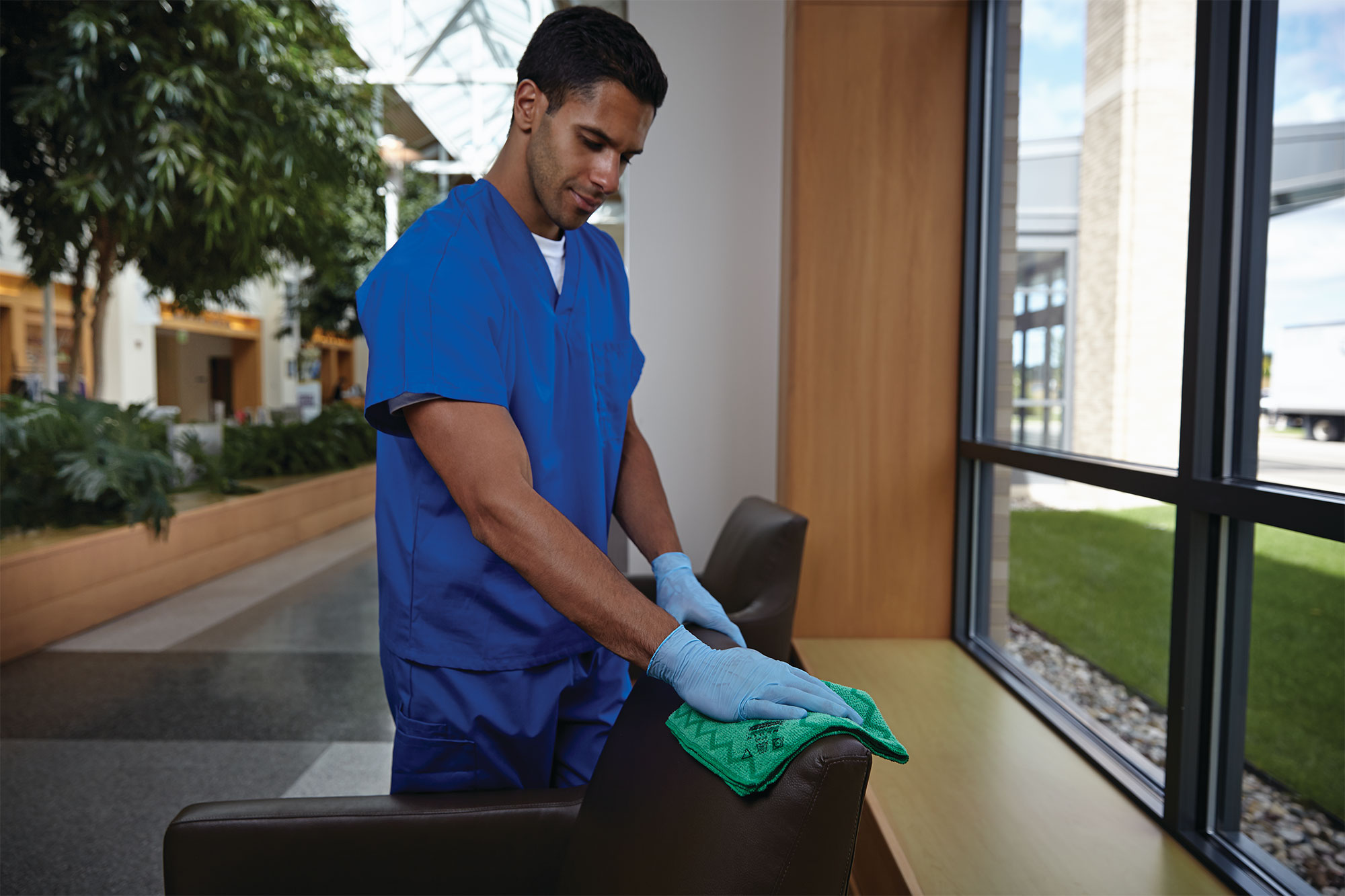
Managers in the hygiene industry are always looking for ways to improve cleaning procedures and create a more efficient work environment. One way to do this is by using microfibre cloths instead of traditional cleaning methods.
Microfibre cloths are becoming increasingly popular in the cleaning industry, but what is microfibre exactly? Microfibre is a synthetic fibre that is finer than human hair. It is made up of several small threads that are twisted together. This creates a fabric that can trap dirt and dust particles more effectively than other materials.
Microfibre cloths are better able to remove more dirt, dust, and debris from surfaces than traditional cleaning methods, making them a more effective option overall. In addition, microfibre cloths can be reused multiple times, which helps to reduce waste and save money in the long run. If you're looking for a way to improve your organisation's cleaning procedures, switching to microfibre cloths is a great place to start.
Microfibres are synthetic fibres that are less than one denier. A denier is a unit of measurement for the linear weight or mass density of fibres. For example, human hair is about 20 denier. Most microfibres are made from synthetic materials called polymers, which are long chains of molecules and are used to make textiles and other materials.
Being much thinner than human hair, it can be made into a variety of shapes and sizes. It has many benefits over traditional materials, including being more durable, stain-resistant, and easy to care for. For these reasons, microfibre is becoming increasingly popular in the textile industry.
In hygiene, infection prevention, and COVID management, microfibre cloths are increasingly being used as an alternative to traditional cleaning methods. Microfibre cloths boast a number of advantages over other cleaning materials, making them an attractive option for those looking for a more effective and efficient way to clean their premises.
Microfibre is a synthetic material made from very fine fibres of polyester or polyamide. The individual fibres are usually less than one denier in diameter, much thinner than human hair.
Microfibres are used to make textiles that are extremely soft and smooth, and they are often used in performance apparel because of their ability to wick away moisture. When it comes to hygiene management, microfibre cloths and mops can be an excellent choice due to their high level of absorbency and cleaning power.
The process of making Microfibre starts with extrusion. This is when you force a substance through a mould to create a certain shape. The synthetic polymer that is used to make Microfibre (like polyester or polyester and polyamide) is put through an apparatus that makes filaments of a specific diameter. As the material moves through the machine, heat and spinning meld the polymers together to form one continuous fibre.
There are two types of Microfibres - extruded and monofilament. If a single polymer is used in the extrusion process, the Microfibre is called an extruded or monofilament Microfibre. If more than one polymer is used, the fibre produced is called an extruded blend fibre. However, blended fibres do not technically classify as Microfibres because they are larger than one denier.
Extruded blend fibres can then undertake another critical process – splitting. This works to reduce the size of the fibres, sometimes as small as below one denier.
Splitting happens when you use chemicals and force the surface of the material to split. This creates tiny wedges and valleys on the surface. This makes the surface area much bigger, which makes the material softer.
The science of microfibre is concerned with the manufacture and use of microscopic synthetic fibres. These fibres are used in many industries, including the textile industry, electronics, and medical technology. Microfibre fabric is made up of even smaller diameter individual threads than conventional synthetic fabrics such as polyester or nylon.
Let’s consider the three key science pillars behind microfibre:
Microfibre is effective at cleaning because of its very small fibres. These tiny fibres are able to trap microscopic particles, microbes and liquids. Their small size also allows them to penetrate and clean microscopic apertures on porous surfaces.
Capillary action is the ability of a liquid to flow in narrow spaces without the assistance of, or against, external forces like gravity. When these intermolecular forces are strong enough, they can overcome gravity and other external forces to cause liquid to rise up through small spaces.
Microfibre is made of thousands of tiny fibres that can also capture more particles. This is because it has a large surface area. The large surface also makes the product more absorbent by drawing liquid up its surface.
Microfibre also has a positive electrostatic field. This is important because most dust, dirt, and bacteria have a net negative charge. So they are naturally attracted to the microfibres, where they are trapped and retained. Because of the larger surface area of microfibre products, there is more space available to trap and retain targeted microbes, dust, and debris.
Now you know the answer to 'what is microfibre?', why not try it for yourself? The Hygen microfibre cloth is a premium product that has been tested by accredited laboratories and proven to remove 99.9% or more of tested microorganisms. The cloth is made from high-quality polymers for optimal cleaning and absorbency and features a 16-split design that maximises surface area for optimal microbe and particle removal. Highly durable, the Hygen microfibre cloth is an essential tool for keeping your home clean and free of harmful bacteria and viruses.
For more information, contact us with an enquiry or get a free sample of the Hygen Disposable Microfibre Cloth to see if microfibre suits your cleaning needs.